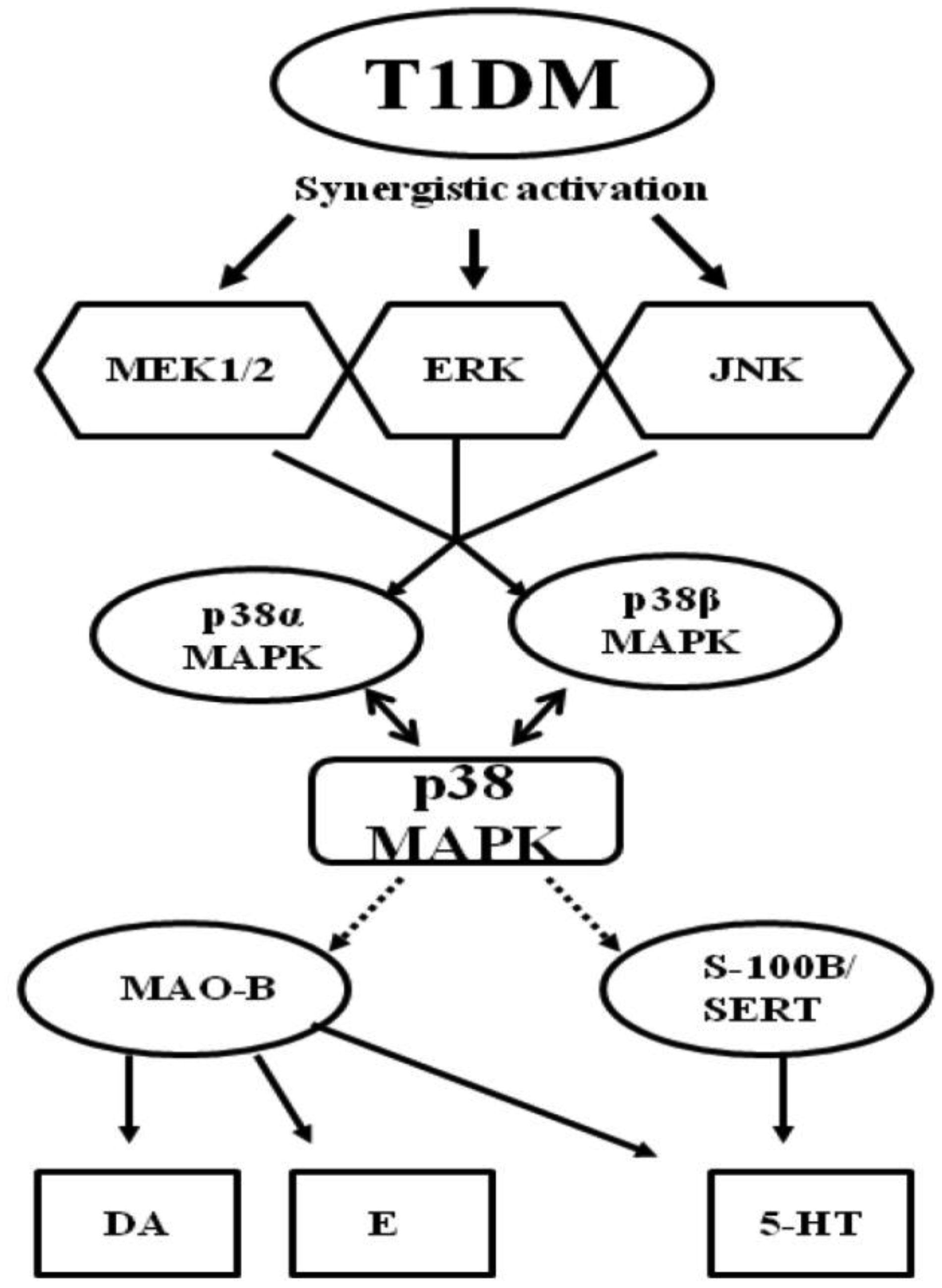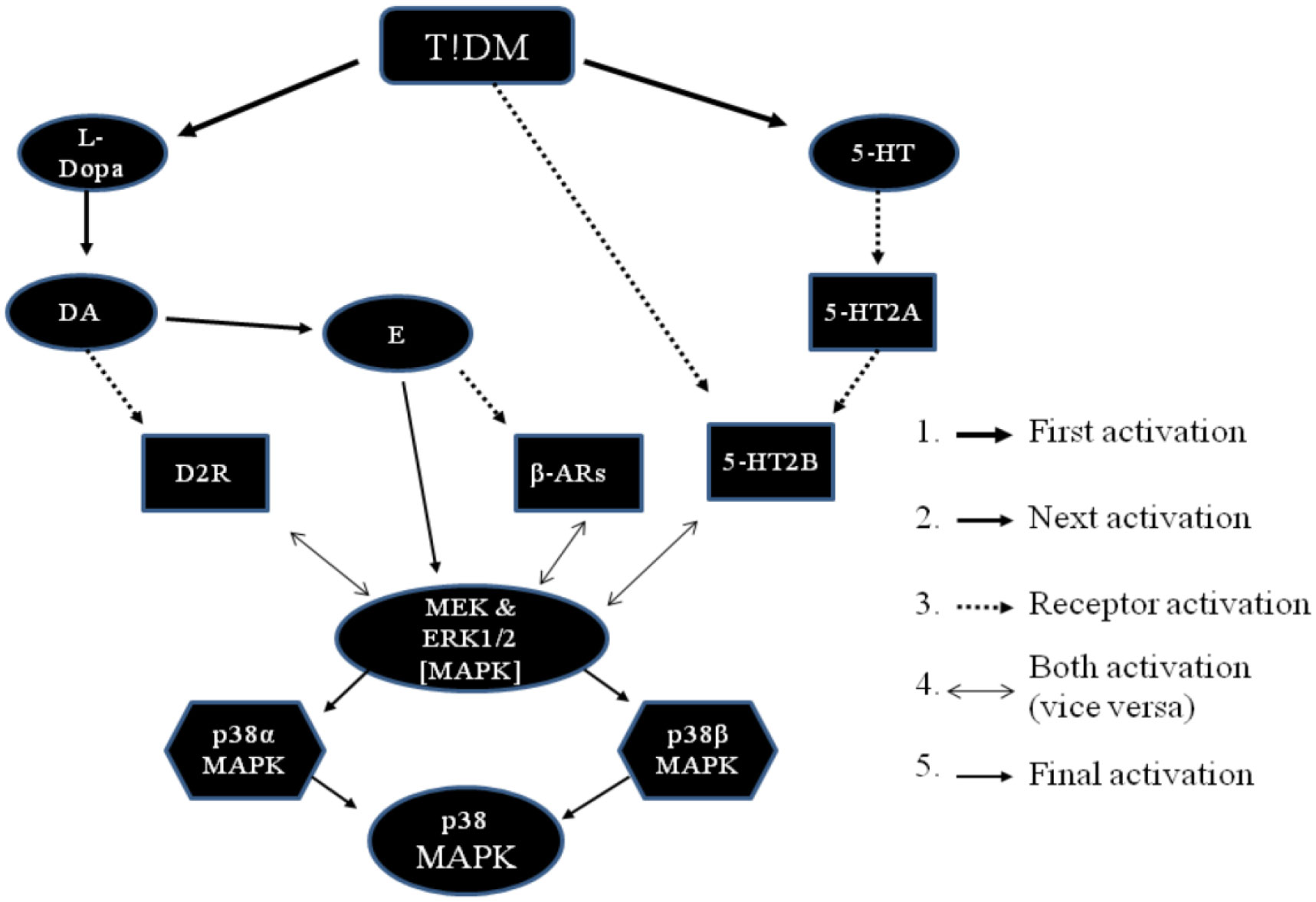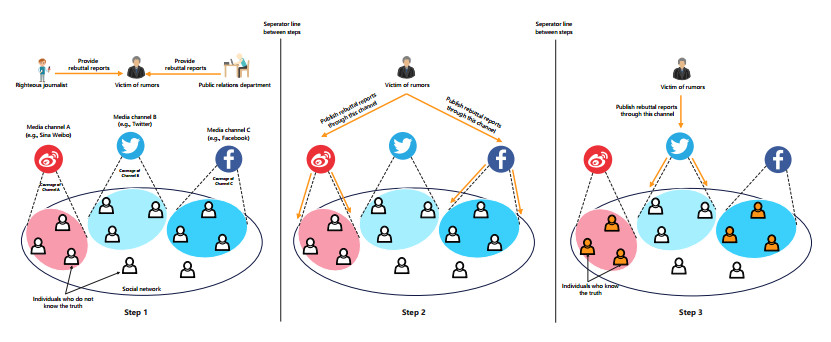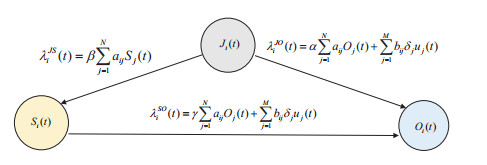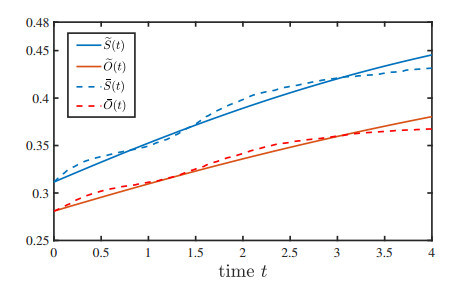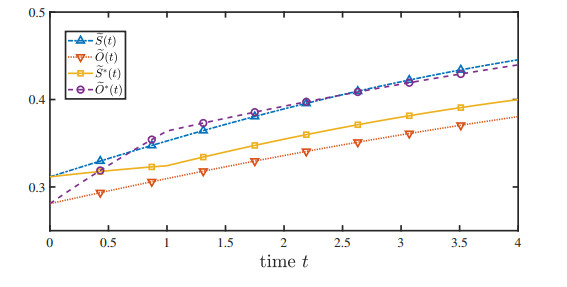1.
Introduction
Metabolic disorders (MD), including T1DM and type 2 diabetes mellitus (TIIDM) affect approximately about 35% of the world populations. Autoimmune dysfunction is the foremost major mechanism that produces T1DM by destroying β-cells, which produces insulin and maintains homeostasis of blood glucose levels all over the body. Insufficient or loss of insulin secretion leads to hyperglycemia as well as acidosis. These metabolic and/or diabetic disorders are associated with the alterations of either or both catecholamine's and protein kinases [1]–[9] particularly in T1DM. Dysfunction of neurotransmitter is the most and well documented effects of diabetes mellitus on central nervous system (CNS) [5]–[13] and accompanied by a number of CNS abnormalities including neuronal atrophy and axonal degenerations [7],[14],[15].
We have shown that the Ca2+-dependent-phorbol esters sensitive,-and a family of serine/threonine (CPST) protein kinases such as protein kinase C-alpha (PKC-α) [5],[6],[10], Ca2+/calmodulin-dependent protein kinase II (CaMKII) [5],[6],[11] and p38-mitogen activated protein kinase (p38 MAPK) [4]–[6],[13] were altered during T1DM, NDH and NDA condition(s) (Figure 1), correlating with the changes of neurotransmitters in discrete areas of brain. These changes were reversed to normal either after insulin or with respective pharmacological-suppressor's treatments. MAPK activates/mediates many of the cellular and molecular functions in response to CPST-induced signals, including neurotransmitters synthesis and release [7],[9],[16]–[19].
p38 MAPK and neurotransmitters [5]–[7],[17]–[19] plays crucial roles on various molecules and triggers its functions and ultimately leads to various complications under T1DM. Thus, it is very important to maintain these molecules under control either by insulin or any pharmacological agents which regulates these elements to prevent the progress of diabetic complications, including diabetes-mediated heart failure (DMHF).
In this review, we are discussing p38 MAPK, 5-hydroxytryptamine (5-HT), dopamine (DA) and epinephrine (E) in seven areas of brain viz. Striatum (ST), Hippocampus (HC), Hypothalamus (HT), Midbrain (MB), Pons Medulla (PM), Cerebellum (CB) and Cerebral Cortex (CCX). Studies have shown that the alterations of p38 MAPK correlated with the changes of DA, E and 5-HT [4]–[7],[13],[17]–[19] in some specific areas of brain, suggesting that p38 MAPK may regulate the level and functions of DA, E and 5-HT, in respective areas, under diabetic condition. The pharmacological-suppressor of p38 MAPK as well as insulin normalized these changes.
Hyperglycemia and/or acidosis mediated CVDs are the major cause of death in DMHF [20]–[23]. Insulin regulates glucose homeostasis and mediates several physiological functions. However, in contrast, the complete or significant reversal of these signal molecules by sufficient insulin or pharmacological agents has also shown to affect some of the biochemical as well as physiological processes in the CNS and DMHF [21]–[24]. Hence, complete understanding of these mechanisms would potentially provide new targets in the treatment of DMHF.
2.
Signaling systems and its functions in diabetes
Among all, the loss or inadequate β-cell secretion of insulin develops variety of risk factors including hyperglycemia, which in turn leads to obesity, increased blood triglycerides, acidosis. All these changes either alone or in combination with other molecule(s) develops functional and structural changes of brain and neurodegeneration, [7],[14],[15] leading to abnormal functions of CNS as well as CVDs including cardiomyopathy [25] and DMHF [21]–[24],[26].
Uncontrolled diabetes has shown to develop atrophy, particularly in the brain regions [7],[14],[15]. The understandings of underlying molecular mechanisms involved in the development of atrophy and chronic cellular damage in the CNS or DMHF are limited. However, there are several reports that points in the same direction that an over or less insulin secretion and its abnormal biological functions, metabolic or mitochondrial dysfunction, oxidative stress, formation of glycation end products, increase in neurotransmitters [9],[20]–[23],[26] and activated protein kinase C (PKC) [27]–[29] or p38 MAPK [24],[30],[31] are all shown to be involved in this complex mechanisms.
2.1. Mechanistic and functional view of p38 MAPK isoforms on neurotransmitter signaling in T1DM
p38 MAPKs are one of the main signal transduction mechanisms and the activation of which results in several cellular and molecular functions [139]. So far there are four p38 MAPK isoforms were characterized in mammalian cells: (1) p38α MAPK14, (2) p38β MAPK11, (3) p38γ MAPK12, and (4) p38δ MAPK13 [140] encoded by different genes. p38α was the first and most studied isoform, which refers to p38 MAPK in the literature. All of them are widely expressed in variety of cells and tissues at different concentrations [141].
p38 MAPKs are strongly activated by various stimulants including T1DM [4]–[6],[13]. All p38 MAPKs are CPST, which catalyze the reversible phosphorylation of proteins. The activation of these p38 MAPK isoforms (p38α, p38γ, p38β, and p38δ) are regulated by the selective and synchronized action of two kinases such as MKK3 and MKK6 [142]. These two kinases are in turn activated by a MAPK kinase kinase (MAP3K) upon phosphorylation of Serine/Threonine residues [140]. Based on sequence homology, substrate specificities, and sensitivity to chemical inhibitors, the p38 MAPK family can be further divided into two subsets, p38α/p38β and p38γ/p38δ. However, all these isoforms shares highly similar protein sequences with each other. p38δ MAPK shares 61%, 59%, and 65% amino acid identity to p38α,-β,and –γ MAPKs, respectively [143].
Expression level of p38δ MAPK directly proportional to pancreatic-β-cell death and are afforded protection against insulin resistance induced by a high-fat diet, implicating a role in the pathogenesis of diabetes mellitus [144]. p38α and p38β MAPK signaling, functions, and substrates are highly sensitive to inhibition by SB203580, SB202190, and L-167307 [145]–[147]. These compounds ultimately lead to reversal of T1DM mediated alterations of neurotransmitters [13] as well as CVD including heart failure [6]. Cardiomyocyte formation was impaired in p38γ MAPK knockdown mice [148] and both p38γ and p38δ promote cardiac hypertrophy via mTOR pathway [149]. Studies have shown that the alterations of p38 MAPK correlated with the changes of DA, E and 5-HT [4]–[7],[13],[17]–[19] in some specific areas of brain, suggesting that p38 MAPK may regulate the level and functions of DA, E and 5-HT, in respective areas, under diabetic condition (Figure 1 & 2). The pharmacological-suppressor of p38 MAPK normalized these changes suggesting a role for p38 MAPKs under diabetic conditions.
2.2. Role of p38 MAPK and neurotransmitters in DMHF
Hyperglycemia induced activation of PKC triggers the activation of p38 MAPK, which plays significant roles in insulitis [28],[32],[33]. Prolonged hyperglycemic and acidotic conditions results in insulin or drug resistance, and activation of p38 MAPK and regulation of monoamines [4],[7],[9],[13],[17]–[19],[28],[29] (Figure 1) in some specific areas of brain. Therefore, these factors either alone or in combination with one or more compounds may develop neurodegeneration, functional and structural changes of brain [7],[25],[34],[35], culminating in neurotransmitters and CNS dysfunction [17]–[19], arterial and vascular abnormalities via p38 MAPK and that may lead to CVDs and DMHF [21]–[23]. Hence, the abnormal levels observed in various signal molecules under both T1DM and NDH conditions (Figure 1) may share a common pathway by which all the intra-and extracellular changes occur.
2.3. Role of p38 MAPK in insulin-resistance and impaired glucose tolerance
Insulin receptor substrate-1(IRS-1) plays a key role in insulin signal transduction, and glucose transporter type-4 (GLUT-4)/(SLC2A4) gene, which is important for insulin-mediated glucose uptake [33],[36],[37]. More specifically, p38 MAPK family of protein kinases has shown to involve in the development of insulin resistance by binding to potential MAP kinase phosphorylation sites in IRS-1 [30],[31],[33],[38],[39]. Furthermore, insulin stimulation in various cell types is capable of activating members of the MAP kinase family (Figure 2), particularly Erk 1/2, JNK, and p38 [40]–[45].
2.3.1. Signaling mechanisms and inhibition of p38 MAPK activity and activation
p38 MAPKs activation occurs (signaling mechanisms) by dual phosphorylation of tyrosine and threonine residues, which is located in the kinase sub domain VIII. It is catalyzed by the dual specificity kinases (MKK3 or MKK6 and MAP2Ks), which are in turn activated upon phosphorylation of both serine/threonine residues and a MAP3K. This sequence of action is responsible for activating the p38MAPK pathways. This p38 MAPK activation is clearly cell type and stimulus specific. There are several MAP3Ks have shown to regulate p38MAPK signaling pathways such as mixed-lineage kinases (MLKs), thousand and one amino acid (TAO) 1 and 2, apoptosis signal-regulating kinase-1 (ASK1), TGFβ-activated kinase-1 (TAK1), and some of the MAPK/ERK kinase kinase (MEKK) family members [150]. MKK3 and MKK6 are selectively activates p38 MAPKs, and not other MAPKs [151], by docking sequences in the amino-terminus of the MKK and p38 MAPK isoform-specific sequences in the activation loop [152]–[154]. The biological effects of p38 MAPKs are determined by the magnitude and duration of its signal transduction.
p38 MAPK activation and activity occurs by several biological and pharmacological mechanisms. T1DM or pharmacological agents such as phorbol 12-myristate 13-acetate (PMA), which activates p38 MAPK [4],[13] by phosphorylation have been shown to involve in various cellular and molecular functions including neurotransmitters [16],[17],[19] as well as CVD including heart failure [6] were reversed after inhibiting p38 MAPK by its inhibitors SB203580, SB202190, and L-167307 [145]–[147].
2.4. Myocardial infarction, apoptosis and p38 MAPK
In a recent study, the diabetic post-infarct rat myocardium has shown an increase in the phosphorylation of the p38 MAPK and that the infarction exacerbated cardiac hypertrophy, fibrosis and collagen deposition in myocardial tissue [46]–[49]. The activated p38 MAPK has shown to be involved in hypoxia, inflammation, and other growth factors including TGF-β as well as angiotensin II [39],[50]–[52]. Pro-inflammatory regulators such as interleukin-6 (IL-6), cyclooxygenase-2 (COX-2) and CCL2 in the heart [53],[54] have also been associated with an increase in the activation/expression of p38 MAPK. Myocardial infarction (MI) induced an increase in PTEN protein expression and that pathway might contribute to the increase in cardiomyocyte apoptosis [46],[55].
Both myocardial ischemia and oxidative injury induces the activation of p38 MAPK. In cultured neonatal cardiomyocytes, over-expression of p38α MAPK reduced anti-apoptotic protein Bcl-xl expression, and p38 inhibition reduced stress-induced apoptosis [86]–[89]. In contrast, other studies have shown that p38 MAPK also involves in anti-apoptotic effects during early response to oxidative stress or anoxic preconditioning via phosphorylation of α and β-Crystallin or induction of Pim-3, respectively [90],[91]. Interestingly, p38α MAPK has a pro-apoptotic role via p53 activation, whereas p38β MAPK has a pro-survival role via inhibition of ROS formation [92]–[94]. Therefore, the apoptotic effects seen after induction of p38 MAPK in various experimental conditions may be due to p38α MAPK, which represents major functional aspects in the p38 MAPK pathway. Another study indicates that inhibition of JNK/p38 MAPK-mediated inflammation and apoptosis by ivabradine improved cardiac function in STZ-induced diabetic mice [78],[95].
2.4.1. Mechanisms of p38 MAPK activation in T1DM related to acute myocardial infarction (AMI)
The MAPK signaling pathway is present in majority of the cells and transduces extracellular signals into cytoplasm and nuclei of the cells. This pathway plays a vital role in biological functions including proliferation, differentiation, transformation, and apoptosis. Several studies have shown that pathological signals, in particular diabetic hyperglycemia, which activates this pathway. Some studies have also shown that this pathway leads to diabetic complications [155] as well as the development and progression of coronary artery disease such as fibrosis, cell hypertrophy, and migration including MI [156],[157].
There are several stimulating factors such as reactive oxygen species, inflammatory factors, diabetes (hyperglycemia), and angiotensin II, which can activate this pathway are all shown to regulate indirectly by this pathway [158]. Endothelial cells cultured and treated with increasing concentrations of glucose activate the p38 MAPK signaling pathway further [159]. These studies confirmed that this pathway might play a vital role in the pathogenesis of AMI in T1DM. The over production of inflammatory factors and chemokines in T1DM (rats and/or cells) and the differential activation of the p38 MAPK signaling pathway may be a potential mechanism of pathophysiological changes in endothelial cells and cardiac dysfunction [160].
2.5. p38 MAPK regulation of cardiac hypertrophy
In-vitro studies have shown that both pharmacological inhibition and/or dominant negative p38 MAPK mutant expression was able to attenuate cardiomyocyte growth in response to hypertrophic stimuli [60]–[62]. Moreover, chronic activation of p38 MAPK is sufficient to induce hypertrophy in cultured cardiomyocytes [49],[62]. It has been shown that these functions were carried out by two distinct isoforms of p38 MAPK (p38α-MAPK and p38β-MAPK) (Figure 3). Even though there is a discrepancy between in-vitro and in-vivo studies on the effects of p38α-MAPK and p38β-MAPK, over expression of active cardiac-specific MKK3 and MKK6 mice did not develop cardiomyocytes [63],[64]. However, activated MKK3 in the heart results in cardiac hypertrophy and fibrosis [65]. This discrepancy might be caused by duration of p38 MAPK activation and the developmental timing of these factors.
2.6. p38 MAPK/cardiac fibroblast/myofibroblast (CF/MF) and fibrosis
Cardiomyocyte (CM) death and the formation of scar tissue are accompanied by hypertrophic growth caused by pressure overload or ischemic injury, which can lead to HF and lethal arrhythmias [66],[67]. The activation of the ERK1/2/p38 MAPK pathway enhances angiotensin II-induced proliferation of cardiac fibroblast/myofibroblast (CF/MF) [56]–[58]. Once CF/MF activated, it secrete extracellular matrix (ECM) in an adaptive response to injury, which enhances cardiac repair by preventing lethal wall rupture following MI [68]–[70]. However, sustained CF/MF activation eventually leads to excessive fibrosis and ventricle wall stiffening. CFs/MFs also stimulate electrical conduction, angiogenesis, inflammation, and cardiac growth and development [71]–[78]. All these changes are either completely or at-least partially normalized by p38 MAPK inhibitor.
2.7. p38 MAPK and cardiac inflammation
The diabetic cardiomyopathy is associated with cardiac inflammation, myocardial infarction, pressure overload, decreased left ventricle (LV) function, and dilated cardiomyopathy [41],[79]–[81]. Furthermore, other pro-inflammatory cytokines, such as TGF-β and IL-6 have also shown to be elevated in diabetic animal models [43],[54]. Cytokines are important elements, which regulates/attenuate myocyte contractility, via reducing systolic cytosolic calcium levels by altering sarcoplasmic reticulum function [79],[82]. Recent studies suggests that a direct role of cardiomyocytes in pro-inflammatory cytokine production [83],[84].
p38 MAPK phosphorylation inhibited by suppressor simultaneously normalized the pro-inflammatory cytokine levels such as TNF-α, TGF-β and IL1-β, and IL-6 in the cardiac tissue of diabetic animals [43],[54],[85]. Inhibition of p38 phosphorylation or activity is also accompanied by improvement of LV function, which showed impaired cardiac function and increased cytokine levels in non-diabetic, transgenic, p38-overexpressing mice [49],[80],[81],[85].
2.8. Cardiomyopathy and p38 MAPK
MAPK and in particular p38 MAPK pathway, play a crucial role in the development of diabetic cardiomyopathy and heart failure [21]–[23],[25]. The p38 MAPK signaling cascades modulate genes that regulate cardiomyocyte proliferation, cardiomyocyte apoptosis, cardiac hypertrophy, cardiac fibrosis, and cardiac cytokine-mediated inflammation [48],[52],[56],[89],[96]. Diabetes-induced high glucose levels, oxidative stress, ischemia, and angiotensin II [38],[39],[49],[51],[52],[97] all have shown to upregulate/phosphorylate p38 MAPK. Therefore, cardiomyopathy may be prevented by inhibiting p38 MAPK in diabetic patients.
2.9. p38 MAPK and heart failure
Experimental diabetic animals, imitate the structural and cellular abnormalities of diabetic cardiomyopathy of humans [37]. Both hyperglycemia and acidosis are the hallmark of T1DM, leads to several complications including cardiac fibrosis, cardiac inflammation, and LV dysfunction, through oxidative stress, angiotensin II [48],[49],[52],[89],[98]. Enormous preclinical studies have reported the role of p38 MAPK in myocardial infarction, ischemic heart disease, and atherosclerosis [55],[96],[99]. Moreover, data from human studies demonstrated that the heart samples from patients with idiopathic dilated cardiomyopathy and ischemic heart disease the p38 MAPK was found to be activated (Table 1). Recently the SOLSTICE phase 2 trials also demonstrated that suppressing the p38 MAPK improves LV function, and myocardial infarction [100],[101]. These studies are in close agreement with animal studies, and collectively demonstrate that the p38 MAPK plays vital role in cardiovascular diseases and heart failure, and that the inhibition of p38 MAPK may be a promising therapeutic target.
2.9.1. Roles of p38 MAPK in condition heart, application and therapeutic approach of p38 MAPK inhibitor
Preliminary studies with p38 MAPK-specific inhibitors showed therapeutic effects on myocardial ischemia, myocardial apoptosis, and left ventricular hypertrophy [161]; Beraprost Sodium (BPS) have shown to be a promising effects on condition heart/heart failure in animal models. BPS treatment inhibits the p38 MAPK signaling pathway including expression of inflammatory factors such as TNF-α, HIF-1α, and MMP-9. It also inhibited the expression of BNP, ANP, and myocardial cell apoptosis thereby delaying the progression of DMHF and protecting cardiac function [162]–[166].
More importantly p38 MAPK signaling pathway also involve in the protection of MI. Injury of myocardial ischemia-reperfusion occurs via oxidative stress, inflammatory response, injury of mitochondria, overload of calcium, energy imbalance, and apoptosis [167],[168]. Phosphorylated p38 MAPK further activates the downstream substrates, activation of inflammatory cells, and release of inflammatory cytokines such as TNF-alpha and IL-1 beta until apoptosis [169]. The mechanism of activation and actions may be through the inhibition of inflammatory factors including TNF-alpha and IL-1 beta, which ultimately regulate the signaling pathway of p38 MAPK [170].
2.9.2. Use of p38 MAPK inhibitor in T1DM heart – Several study models
Diabetic heart diseases are consequences of continuous process of several factors such as inflammatory factors, dual phosphorylation of tyrosine and threonine residues, cytokines, neurotransmitters, diabetic hyperglycemia, reactive oxygen species, chemokines, proliferation, differentiation, transformation, and apoptosis etc. Several studies in various animals and humans (both in-vitro and in-vivo) showed increased level of p38 MAPK under these conditions and reversed after the use of inhibitors such as SB203580, SB202190, and L-167307 [145]–[147],[173],[174]. Cardiac dysfunction induced by diabetic wild type (WT) mice showed increased level of p38α MAPK and were restored by TG DN p38α MAPK in diabetic heart of this mice [172]. Elevated p38 MAPK in cardiac hypertrophy, and myocardial infarction in murine model systems were attenuated by pharmacological inhibitors [173]. Inhibition of p38 MAPK in Streptozotocin (STZ)-induced diabetic male Lewis rats inhibited the increase in leukostasis and expression of iNOS [171]. Preclinical studies carried out in mammalians including dogs, monkeys (macaques and baboons) and humans showed increased level of inflammatory factors and cytokines as well as p38 MAPK (Table 1). These changes were reversed after treating with p38 MAPK inhibitor (SB203580) [174].
p38 MAPK activity and activation occurs by several pathophysiological mechanisms. T1DM or pharmacological agents such as PMA, which activates p38 MAPK in Wistar strain albino rats [4],[13] by phosphorylation have been shown to regulate neurotransmitters [10]–[13] as well as CVDs and heart failure [6]. These changes were reversed after inhibiting p38 MAPK by its inhibitors (SB203580, SB202190, and L-167307). p38β MAPK have shown to inhibit the over-expressions of inflammatory cytokines in human monocytes [145], eukaryotic cells [146] as well as in in-vivo models [147]. BPS has shown to be promising effects on condition heart/heart failure in Sprague-Dawley (SD) rats. BPS treatment inhibits the p38 MAPK signaling pathway including expression of inflammatory factors such as TNF-α, HIF-1α, and MMP-9. It also inhibited the expression of BNP, ANP, and myocardial cell apoptosis (Table 1) thereby delaying the progression of DMHF and protecting cardiac function [162]–[166].
3.
Role of dopamine in glucose metabolism and insulin sensitivity
Dopamine has been shown to control peripheral glucose metabolism in animals. Interventions such as selective dopamine reuptake inhibitor vanoxerine infusion into the nuclease accumbens (NAc) shell, deep brain stimulation (DBS) of the NAc shell and administration of central bromocriptine, that directly target the central dopamine system, modulate peripheral metabolism in rodent models [102],[103]. Additionally, human data also provide evidence in support of the central regulation of dopamine in glucose metabolism [103],[104]. The same authors also demonstrated that DBS targeting the ventral anterior limb of the internal capsule (VALIC), releases striatal dopamine, which reduces insulin requirements and increases insulin sensitivity in hepatic and peripheral of obsessive-compulsive-disorder in diabetic patients.
The human data also shows that the pharmacological suppression of dopamine synthesis in healthy subjects reduces striatal dopamine concentrations [105], which decreases peripheral insulin sensitivity. Kasper et al. [103] have reported that the direct activation of D1R+neurons in the experimental model of mice, the NAc improves glucose tolerance and insulin sensitivity. On the other hand, studies have shown the biphasic effects of bromocriptine that the low doses produce motor depression, while high doses initially produce depression and later excitation [106]–[108]. Even though there are certain methodological limitations in human models, both animal and human results (data's) points in the same direction, strongly suggesting that DA and neuronal activity regulates systemic glucose metabolism.
3.1. Dopamine and its derivatives in DMHF
In the past literatures, it has been reported that the neurotransmitters including DA and 5-HT, affects multiple valves with echocardiographic features. Patients those who were taking pergolide and cabergoline (ergot-derived dopamine receptor agonists) have shown to develop significant valve regurgitation. Decarboxylation of L-DOPA yields DA (Figure 3) that act by binding to its GPCRs (D1, D2, D3, D4, D5). Over activation of β-adrenoreceptors, because of dopamine hydroxylase, in cardiac fibroblasts (Figure 3) has been shown to induce inflammatory cytokines, proliferation, and fibrotic processes. Mice cannot synthesize NE or E, in the absence of dopamine hydroxylase enzyme, and that condition leads to impaired proliferation during vascular remodeling [39],[109]–[111].
3.2. Dopamine receptors mediated heart diseases
Cardiovascular (CV) complications such as orthostatic hypotension (OH) and heart failure (HF) is associated with the use of D2 receptor (D2R) agonists in the treatment of PD. Apart from central nervous system effect, dopamine agonists modulate other body functions including CV system(s). D2 receptor selectively stimulates bradycardia and lowers BP both in human and animals [106],[112],[113]. Several preclinical studies have shown that administration of bromocriptine-QR (Dopamine D2 receptor agonist) in the morning increases central dopaminergic tone and this has been linked to normal insulin sensitivity and functions as well as normal glucose metabolism. Bromocriptine-QR has shown to improve various metabolic functions in diabetic-patients as well as improvements in many surrogate markers of CV disease [113]–[115].
4.
The role of serotonin in heart diseases in general
Circulating serotonin levels, elevates during metastatic proliferation of enterochromaffin cells (serotonin secreting cells), which causes fibrous plaques on the heart valves. Moreover, the ergot-derived dopamine agonists have also shown to have significant increase in CVDs [116],[117]. These findings suggest that these neurotransmitters may play a role in the development of certain types of CVDs. It is widely reported that these signaling molecules exert their effects by two different potential pathways such as neuronal and the vascular networks, through which it affects the target sites including heart.
5-HT perform its physiological functions via CNS as well as outside the CNS, including insulin secretion, gastrointestinal peristalsis, blood coagulation, vaso-constriction, and cardiac development [118]–[120]. There are about 14 subtypes of 5-HT receptor, however 5-HT2A, 5-HT2B, 5-HT2C receptors are implicated in heart disease. 5-HT2B activation has shown to stimulate the ERK1/2 signaling pathways in the cardiac tissues and plays a vital role in the heart development. Excess Oral or intravenous administrations of 5-HT have shown to induce heart valvular disease (Figure 3) in adult mammals [121],[122] and 5-HT2 receptor antagonist treatments reversed these effects.
4.1. The role of serotonin in DMHF
Increased CNS disorders correlate with increased levels of extracellular 5-HT in diabetic patients. A comparative study with diabetic patients and animal models has shown that increased 5-HT level led to impaired heart valves. Diabetes associated depression have also shown to agammaavate coronary heart disease [78],[120]. 5-HT is found in the brain, gut, and blood platelets and it is a vasoactive substance. 5-HT performs diverse cardiophysiologic functions through the 5-HT1 receptor mediating vasodilation and the 5-HT2 receptor mediating vasoconstriction in cardiac tissues. 5-HT has also shown to be involved in the pathogenesis of cerebrovascular disorders including migraine and in the cardiovascular responses to stress [120],[123].
4.2. Regulations of DA/E/5-HT and MAO by p38 MAPK in diabetes
It is well documented that the changes in central monoamine oxidase (MAO) activity (mitochondrial enzyme), may alter the central level of one or more of these amines by inactivating several monoamines. Moreover, MAO A and B play key roles in the metabolism of neurotransmitters in the CNS. MAPK signal pathway selectively induces the activation of MAO B expression thereby suggesting that the MAPK or its pathway regulates both MAO and neurotransmitters including DA/E/5-HT (Figure 2). It has also been reported that cell culture and in-vivo studies have shown that activated MEK1/2 and ERK (MAPK) activate neurotransmitters, including dopaminergic, adrenergic and serotonergic receptors [16],[17],[19].
In contrast, it has been shown that the inhibition of p38 MAPK leads to insulitis. In general, insulin release processes involves, initially metabolism of glucose, and that leads to an increase in ATP/ADP ratio as well as an increase in the cytosolic free calcium concentration (Ca2+)i, and eventually exocytosis of insulin [19],[33],[125]. Hence, it is possible that the insulitis observed after the inhibition of p38 MAPK, may be through one of the release processes described above, and that may not be involved in the regulation of MAO or DA/E/5-HT by MAPK.
4.3. Current treatment strategies and its pitfall in diabetes
Insulin treatment to either T1DM or TIIDM is the foremost option to control all diabetic complications for the last several decades. The recent recombinant technology improved the efficiency of insulin delivery with short or long acting, including various strengths as needed. However, several lines of evidence show that the prolonged treatment of insulin leads to insulin resistance [126]–[128]. Apart from insulin treatments, the trials of oral noninsulin medicaments for diabetes mellitus have been carried out for decades in T1DM as well as TIIDM patients. At first, the efforts were taken to control the release of glucose from liver to the blood stream and as a result of this the chemical/drug (biguanides) was used successfully for controlling the peripheral glucose levels [129] including juvenile [130],[131]. Moreover, the other classes of drugs, such as amylin analogues, sodium-glucose co-transporter 2 inhibitors, thiazolidinediones, incretin-based agents as glucagon-like peptide-1 receptor agonists, and dipeptidyl peptidase-4, were also used and reported to be effective in the treatment of T1DM [132],[133]. However, similar to insulin, these drugs also develop drug resistance as well as some known or unknown side effects.
4.4. The discrepancy in the disease mechanism(s) of animal models and human beings and the use of animal's in experimental diabetes
Numerous studies have been reported that there are several variations in the disease mechanisms of animal models and human beings including the mRNA and cDNA sequences. Simultaneous sequence homology analysis of humans and rodents has shown that only ~45–48% of insulin promoter (−600 to +1) region is matching. There are several other features including cAMP response element, CCAAT box and negative regulatory element also shows marked species specificity. More importantly, the enzymes such as pyruvate carboxylase and ATP citrate lyase, which regulates glucose metabolic pathways, are reported to be significantly different from animals and humans and as a consequence, the glucose clearance and storage varies largely between animals and humans [49],[78],[134].
Despite the differences in the mechanisms of T1DM between rodents and humans, non-obese diabetic (NOD) mice and NOD-derived recombinant congenic strains share common physiological mechanisms, which give several advantages in diabetic research [124]. Many molecules including human leukocyte antigen (HLA) class I and class II linked with human diabetes were generated in transgenic mice. Only the mice expressing HLA A2.1 allele showed development of diabetes, whereas, HLA class II transgenic mice are not able to develop diabetes. These transgenic animal models will be of useful in identifying the role of peptides and its associated pathway in diabetes and in particular antigen-specific immunotherapy [135],[136]. Other studies on gut microbiome have shown that both NOD mice and humans develop T1DM [137],[138].
In short, these experimental diabetic rats, NOD mouse or transgenic models demonstrated correlation of many key physiological functions with humans. Since, there are methodological limitations and ethics involved in human studies, these animal models would give better alternative or platform for understanding the unknown or yet to be identified molecular mechanisms involved in the development of T1DM and that may provide an excellent clue for treatment options for T1DM as well as DMHF.
5.
Discussion
In conclusion, the research and clinical data's from past several decades confirm that hyperglycemia and/or acidosis of T1DM or its associated conditions influences arterial and vascular cell functions by various biological mechanisms. Several lines of reports shows that p38 MAPK is activated in CNS and PNS under T1DM and that leads to synergistic-activation of certain neurotransmitters such as DA, E and 5-HT, and those elements trigger the cardiovascular dysfunctions, including cardiomyocyte proliferation, cardiac inflammation, myocardial infarction, cardiac fibroblast/myofibroblast and fibrosis, cardiac hypertrophy, apoptosis in the heart and cardiomyopathy, leading to heart failure and death. Moreover, many studies have linked p38 MAPK in the regulation of vascular cells permeability, ECM, contractility, micro and macro vascular diseases, angiogenesis, cytokine actions, cell growth, and leukocyte adhesions. Furthermore, CPST-pathway also involved in the up-regulation of 5-HT via S-100β and SERT (serotonin transporter) (Figure 2). Collectively, all these factors determines the levels and functions of paracrine trophic effects, cytoplasmic free calcium levels, metabolism, neuronal transmission and dendritic development, formation of the blood–brain barrier, and activation of receptors in the sensory neurons. More importantly, altered glucose homeostasis leads to changes in the glucose metabolism in CNS and PNS, and that may play crucial roles in the formation of micro or macro vascular diseases, and neuronal dysfunctions, activation of p38 MAPK as well as neurotransmitters (DA, E and 5-HT), which have been shown in the regulation of various CVDs as described above. All these factors could constitute reliable and valid pathological markers in T1DM. The pharmacological agent, which controls these factors, may have potential therapeutic value in the treatment of DMHF.
6.
Future directions for p38 MAPK research on DMHF
The use of p38 MAPK inhibitors or dominant negative in human CVDs, in particular DMHF should strengthen future research interest in this pathway. To date, several study/experimental models such as in-vitro, in-vivo, ex-vivo and human (Table 1) are all shown that p38 MAPKs including isoforms (α, β, γ, δ) are involved in the regulation of CVDs. However, there are several other associated factors and molecules are also involved in these complex diseases. The main limiting factors to further study on the role of p38 MAPKs on various cellular and molecular functions, which determines the development and progression of these diseases, however, are the lack of specific inhibitors and activators for respective molecules involved in this chain of events of this pathway. For example, p38 MAPK over-expression can be suppressed by various compounds such as SB203580, SB202190, L-167307 [145]–[147],[173],[174] and BPS in CVDs and shown to be a promising effect on condition heart/heart failure. These treatments not only inhibits the p38 MAPK, but also inhibits the expression of other factors in MAPK signaling pathway including inflammatory factors (TNF-α, HIF-1α, and MMP-9) and BNP, ANP and myocardial cell apoptosis [162]–[166]. The prospects of therapeutic benefit for patients with CVDs in diabetes, the search for more potent and specific inhibitors of p38 MAPK and/or its associated molecules are absolutely necessary. These may provide potential treatment for the respective conditions and diseases discussed, and may also provide the opportunity to delineate the specific role of p38 MAPK in the absence of involvement of other isoforms (α, β, γ, δ) or molecules. This will also help us to identify the role of p38 MAPK in the other diseases and ultimately the treatment options.
Moreover, it is also absolutely necessary to focus on identifying specific p38 MAPK activators. This may rule out the possible involvements of non-specific molecules during the activation process. In the future, all these may translate to the development of novel therapeutic strategies for patients with CVDs and HF. These approaches (specific inhibitors or activators) may either improve or benefit in the therapeutic regimen as well as to understand clear pathophysiological mechanisms of these elements. Based on our current knowledge and continued efforts on finding better compounds or molecules, which can target specific molecule under specific condition would be of beneficial in the treatment for CVDs in DMHF.
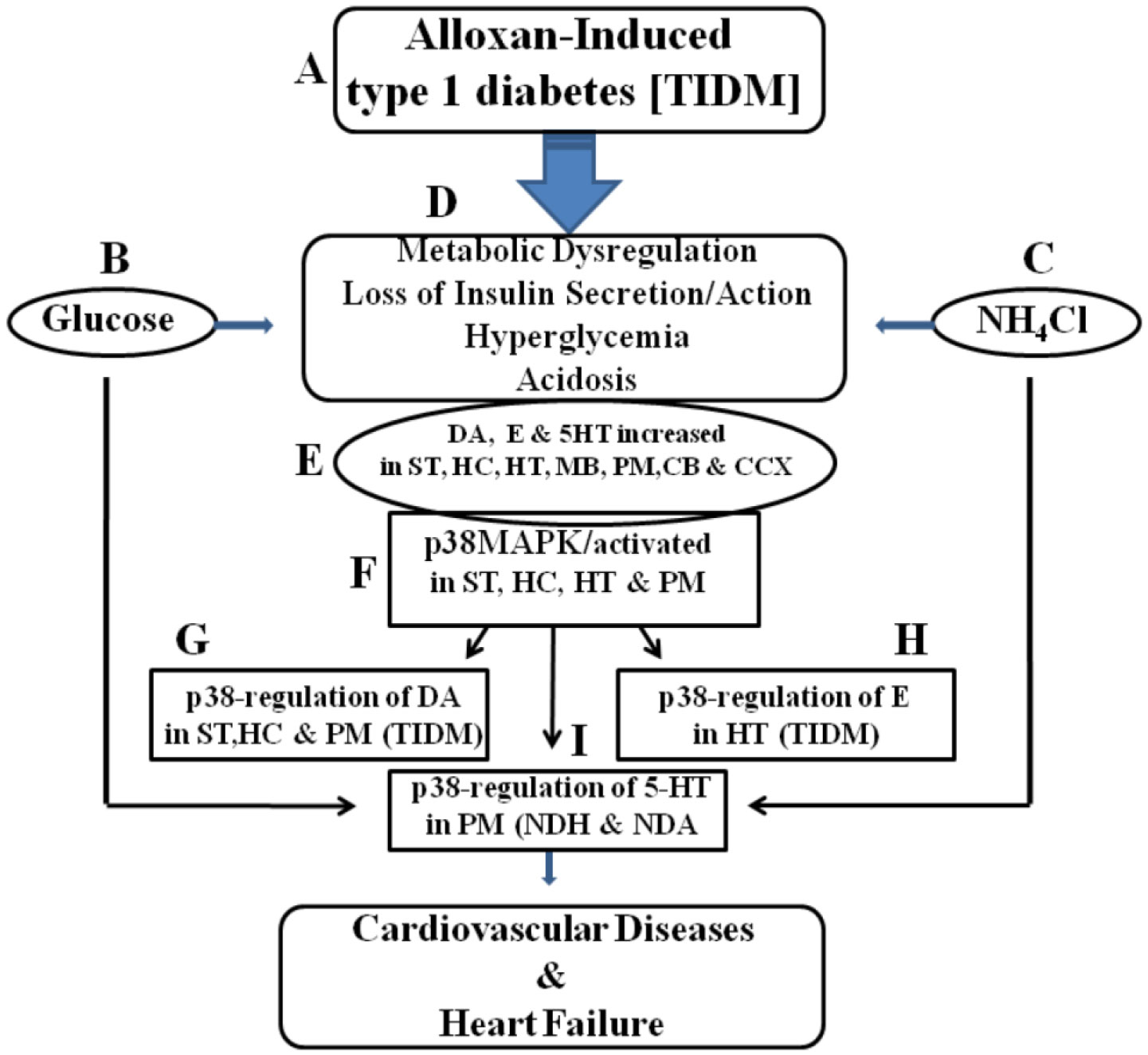









 DownLoad:
DownLoad:
